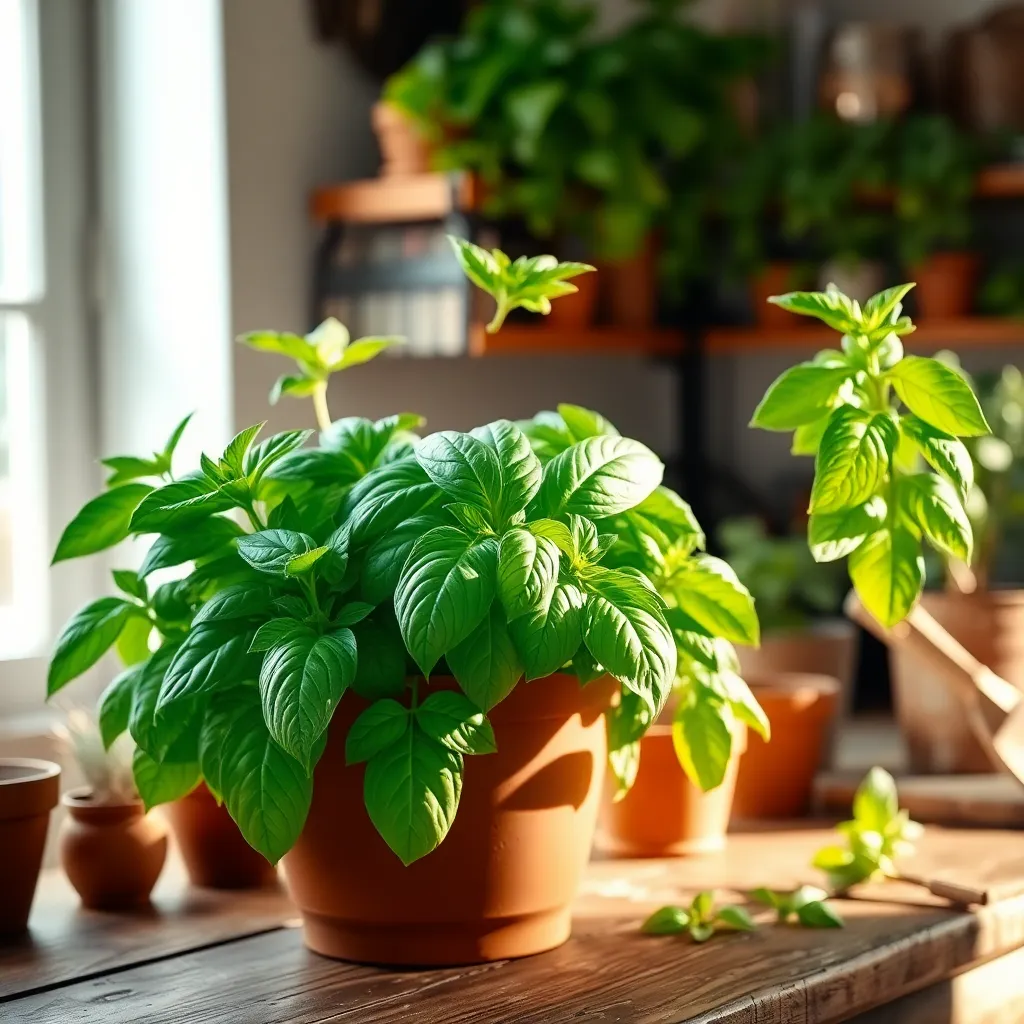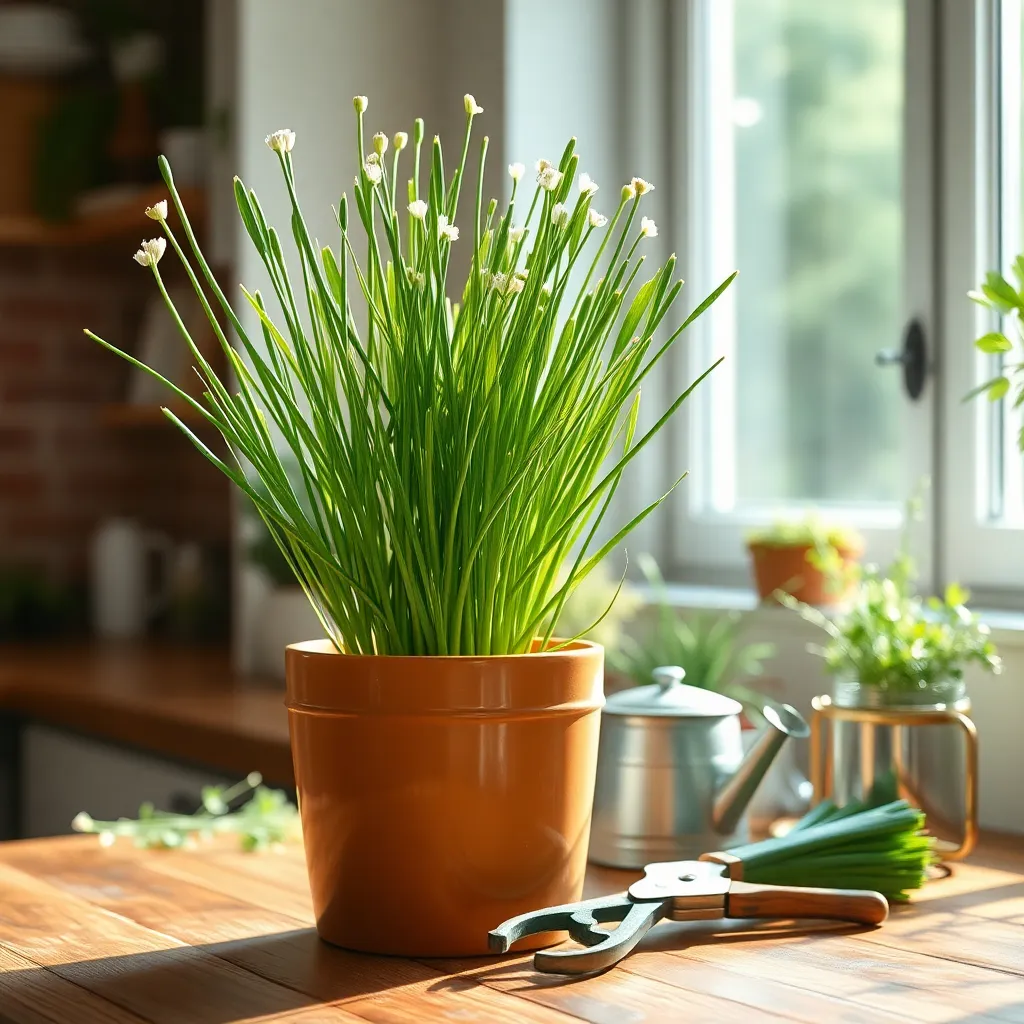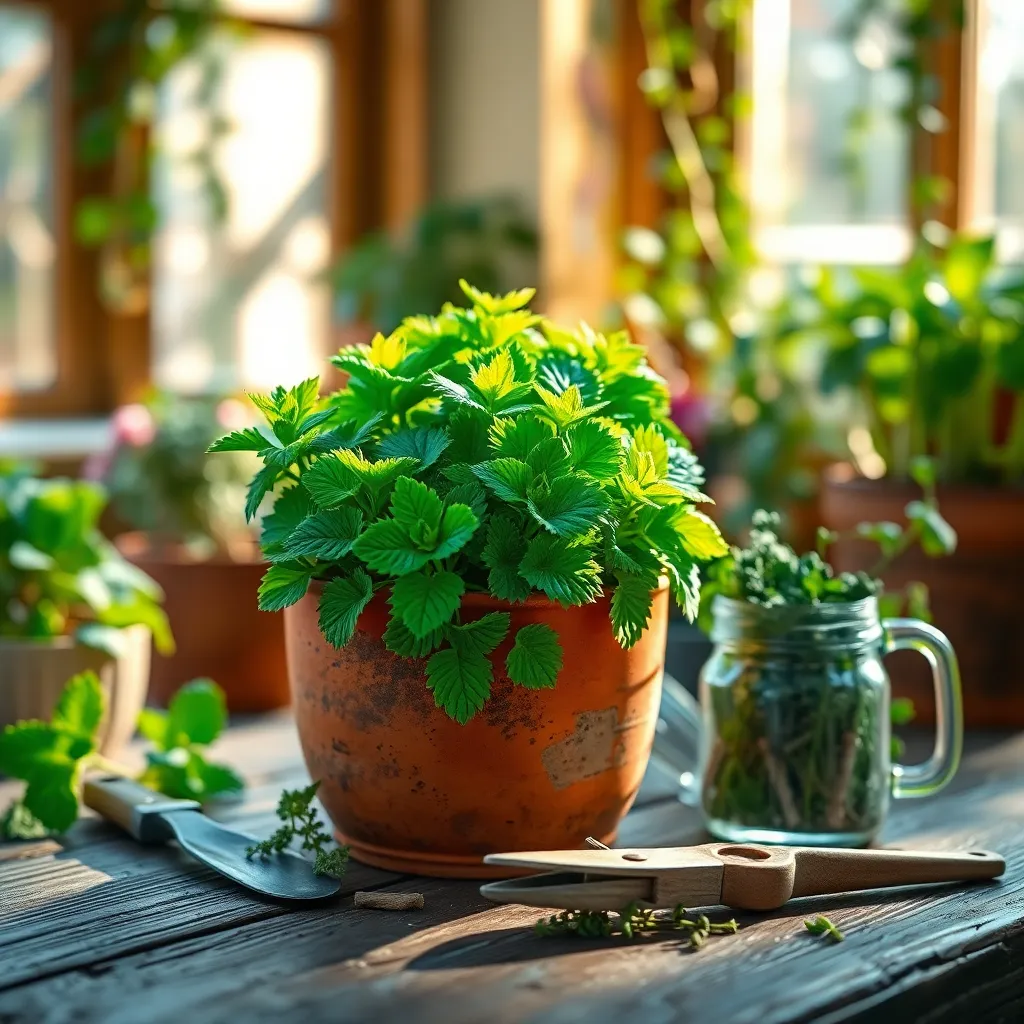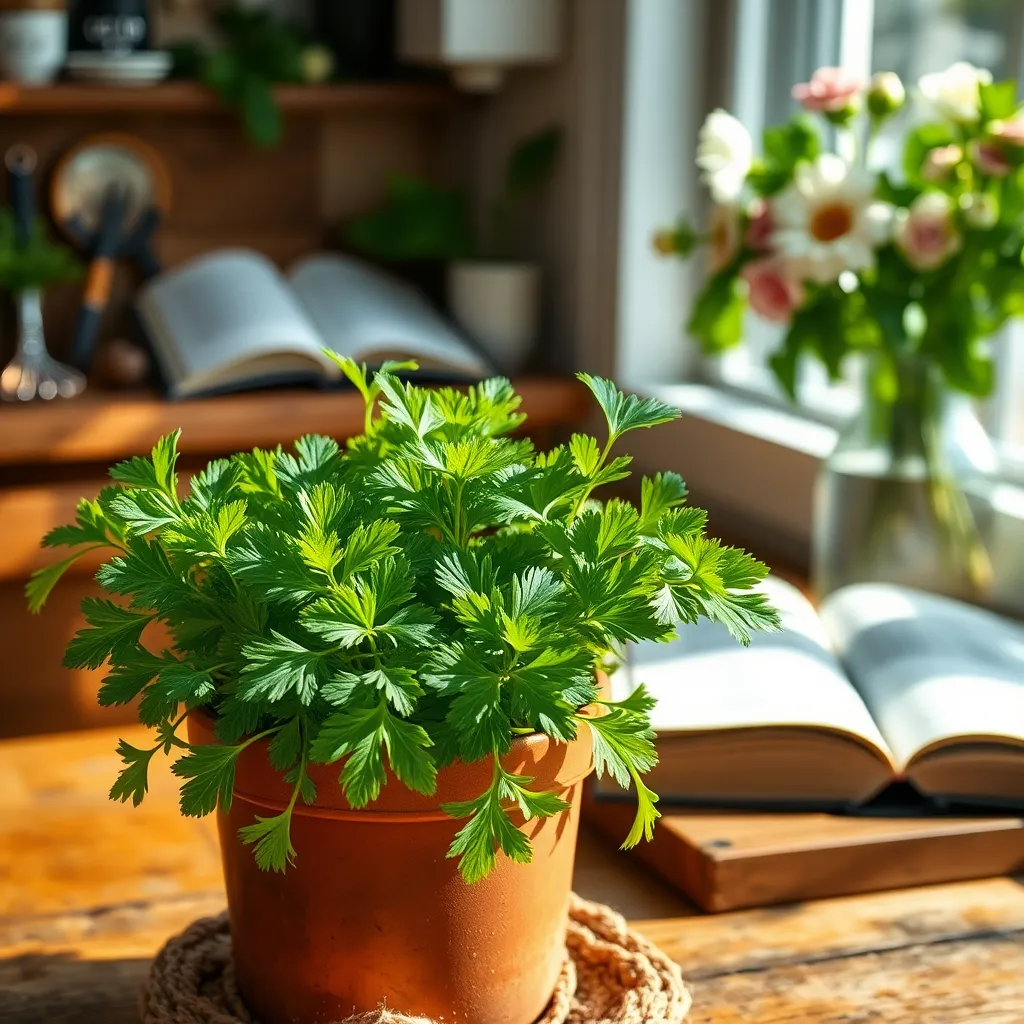Imagine stepping into your kitchen and plucking fresh basil or rosemary right off the plant, infusing your meals with vibrant flavors and aromas all year round. Whether you’re nurturing your first herb garden or enhancing a seasoned green thumb, cultivating herbs indoors offers a unique blend of joy and practicality, transforming the simplest of spaces into a lush, aromatic haven.
Inside this guide, you’ll discover a curated list of the best herbs to grow indoors, chosen for their adaptability and year-round vitality. These resilient plants are not only easy to care for but also promise to reward you with a constant supply of fresh, homegrown ingredients, elevating your culinary creations and boosting your gardening confidence.
Basil (Genovese)

Basil, particularly the Genovese variety, is a fantastic herb to grow indoors all year round. Known for its aromatic leaves, this type of basil thrives in a sunny windowsill where it can receive at least six hours of light daily.
Ensure the potting soil used is well-draining to prevent root rot, a common issue with indoor plants. A mix of peat, perlite, and vermiculite in equal parts is ideal for maintaining the right balance of moisture and aeration.
Watering is crucial for basil’s success; it prefers consistently moist soil but not waterlogged conditions. Aim to water your basil when the top inch of soil feels dry, and use room-temperature water for best results.
For those looking to maximize growth, consider fertilizing your basil every four weeks with a half-strength, balanced liquid fertilizer. Pruning is also key; regularly pinch off the top leaves to encourage bushier growth and prevent the plant from flowering too soon.
Chives (Common)

Chives are an excellent choice for indoor herb gardening, thriving in a sunny windowsill with ease. They require a minimum of four to six hours of bright light each day, making a south-facing window ideal.
Use a pot with good drainage and fill it with a well-draining potting mix, enriched with a bit of organic matter. Consistent moisture is key, so water when the top inch of soil feels dry, ensuring not to overwater which can lead to root rot.
For beginners, starting chives from seed or small nursery plants can be a simple task that yields rewarding results. More experienced gardeners might try dividing mature chive plants to propagate new ones, a technique that also helps rejuvenate older plants.
Regular harvesting encourages bushy growth, so snip off leaves as needed, but avoid cutting more than one-third of the plant at a time. To maximize flavor, harvest in the morning when the essential oils are most concentrated.
Mint (Spearmint)

Growing mint, specifically spearmint, indoors is both rewarding and straightforward. This hardy herb thrives in a variety of lighting conditions, making it perfect for a sunny windowsill or under grow lights.
To ensure your spearmint plant flourishes, use a potting mix that retains moisture yet drains well. Consider a blend of peat, perlite, and vermiculite for optimal results, as mint prefers moist but not waterlogged soil.
Water your mint regularly, aiming to keep the soil consistently damp without allowing it to become soggy. A good rule of thumb is to water when the top inch of soil feels dry to the touch.
Harvesting mint is simple; pinch off the top leaves to encourage bushier growth. Regular harvesting not only keeps the plant from becoming leggy but also enhances its flavor and aroma.
For advanced gardeners, consider propagating mint by taking cuttings and rooting them in water. This method allows you to expand your mint collection and ensure a continuous supply year-round.
Thyme (English)

English thyme is a versatile herb that thrives indoors, offering both culinary and aromatic benefits. To successfully grow thyme indoors, place it in a sunny spot where it can bask in at least six hours of direct sunlight daily.
For optimal growth, use a well-draining potting mix, such as one designed specifically for herbs or cacti. Thyme prefers dry conditions, so water it only when the top inch of soil feels dry to the touch.
Regular pruning encourages bushier growth and prevents the plant from becoming too woody. Snip the top few inches of the stems, especially before the plant flowers, to maintain a healthy, productive herb.
Advanced gardeners can propagate thyme by taking cuttings in the spring. This involves cutting a 4-inch stem, removing the lower leaves, and placing it in a glass of water until roots develop.
Parsley (Italian Flat-Leaf)

Italian Flat-Leaf Parsley is a versatile herb that thrives indoors with the right care. It prefers a sunny spot, so place your parsley pot on a windowsill that receives bright, indirect light for at least six hours a day.
For healthy growth, use a well-draining potting mix that retains moisture without becoming waterlogged. Water the plant consistently—aim to keep the soil slightly moist but not soggy, allowing the top inch to dry out between waterings.
Regular harvesting encourages bushier growth; simply snip the outer leaves at the base as needed. If you’re aiming for more robust flavor, consider fertilizing every four to six weeks with a balanced liquid fertilizer diluted to half strength.
For those with more experience, growing parsley from seed can be rewarding. Soak seeds overnight to improve germination, then plant them about a quarter inch deep in the soil.
Conclusion: Growing Success with These Plants
In exploring ‘Best Herbs to Grow Indoors All Year,’ we delved into five key relationship concepts that draw intriguing parallels to nurturing indoor herbs. First, we learned about patience and consistent care, illustrating the importance of tending to relationships with ongoing attention. Second, the concept of adaptability highlighted how both plants and partnerships thrive with flexibility. Third, communication was underscored as essential, much like understanding each herb’s unique needs. Fourth, we discussed growth and renewal, reminding us that relationships, like plants, can flourish with proper support. Lastly, we embraced the value of creating a nurturing environment, reinforcing that the right conditions foster both plant and relationship vitality.
As an actionable next step, choose one relationship in your life to nurture with the same care you might give to a budding herb—start today by expressing gratitude or initiating a meaningful conversation. Remember, relationships, much like gardens, grow best with continuous care. Bookmark this article to revisit these concepts and reinforce your journey to relationship success. Looking ahead, know that with dedication and love, your relationships have the potential to blossom beautifully throughout the seasons. Save this guide as a reminder of the flourishing connections you are cultivating.

